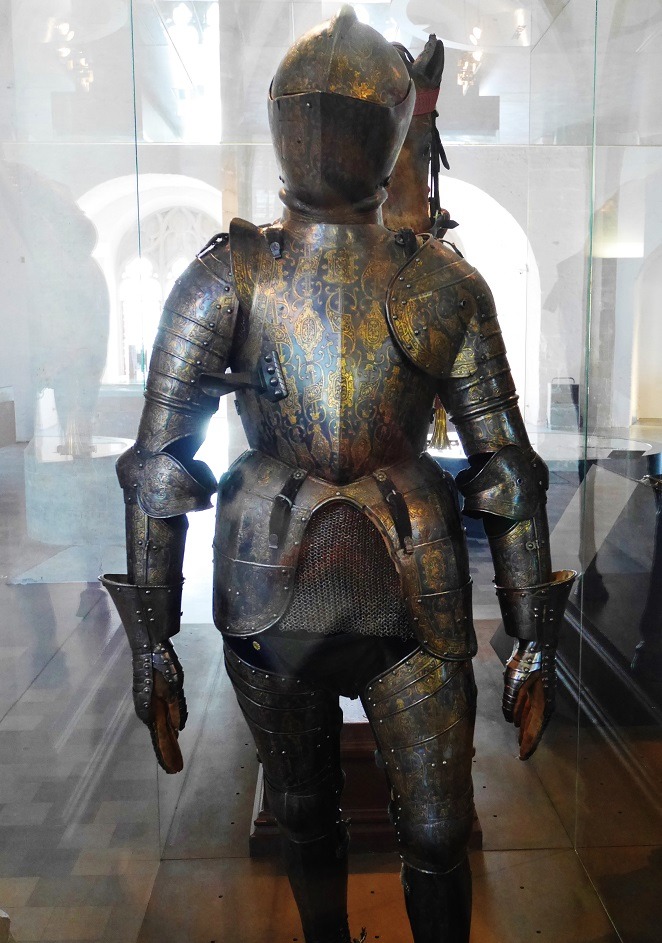Discover the history of the city in the museum it forgot. Emerging from the Porte de Hal metro in Brussels, ancient battles are probably the last thing on your mind. More likely, you'll be preoccupied by the smell of chicken roasting at a neighbourhood butcher's or the whizz of cars speeding along the inner ring road. And yet, walking through a slither of park between the two roads, you'll suddenly be surprised by the spike of a turret through the trees. As you approach, you come up against a heavy wooden door which requires a hefty push to open it. Once inside, the modern world, the smell of hot chicken mixed with petrol and the beeps of car horns disappear.
For most people, "Porte de Hal" calls to mind nothing more than the mechanical voice of the Brussels metro station announcer. But in the past, the name would have conjured up rather different emotions. Over the years, the Porte de Hal has served as a mediaeval gate, a prison, a grain store, a customs house, a place to confine beggars, an archive – and even at one time as a Lutheran church. Its history has known almost as many twists as its own spiral staircase.
Now this former fortification belongs to the Royal Museums for Art and History. The only invasion it worries about today comes from curious children stubbing sticky fingers against its glass cases. But it hasn’t just changed its identity. The Porte de Hal has changed its appearance several times too. The portcullis, moat and drawbridge of the original 14th-century gate vanished in the 19th century when the building was transformed into an enchanting yet ersatz Gothic castle.

© Marianna Hunt
It started in 1830 when the groundwork was being laid for a new Belgian state, leading to demolitions that gnawed away at the ancient city wall. But the Porte de Hal was saved as a solitary reminder of the city's medieval fortifications because of the new government's desire to preserve its historic heritage and a plea from the review La Renaissance entitled Laissez-nous la Porte de Hal.
The article defended the monument, claiming: "it is not its fault that it is so ugly...it is up to us to embellish it". It also set out guidelines on how the Porte de Hal could be redesigned to showcase its ancient history – even suggesting that the museum's doorkeeper wear mediaeval clothes, like the guards at the Tower of London. And so the gate became one of the city's first museums.
Its robust 14th-century design was softened to suit the romantic spirit sweeping 19th-century Europe and embellished with Neo-Gothic additions. The magnificent spiral staircase, lofty tower and spiked turrets, all designed by the architect Henri Beyaert, date from this period. A man as forgotten as the museum he reconstructed, Beyaert was responsible for many Brussels landmarks, including the National Bank of Belgium and the Petit Sablon. He also sparked off the Art Nouveau movement with his philosophy that every building should be a work of art. And yet most Belgians now only recognise the name Henri Beyaert (if at all) from his portrait on the old 100 Belgian franc banknotes.


The beautiful medieval staircase leads visitors to impressive views over the city.
Gradually outgrown by its own collection, in 1889 Beyaert's little castle was forced to surrender many of its exhibits to larger museums. Abandoned by visitors and plundered of its best pieces, the forgotten museum of the Porte de Hal plodded on for many years until it became so neglected that it had to be closed down in the 1970s.
It reopened in 1991 after a long renovation. But this muddled and forsaken monument, with its confused identity and mix of styles, proved difficult to resurrect from the cracks of Brussels' cultural map. Restoration ground to a halt and it might easily have ended up on a list of the city’s extinct museums. But the Porte de Hal was relaunched in 2007 with a new plan to get visitors over the drawbridge.
Saved from obscurity, the museum now houses relics from Brussels' past as well as exhibits on its own history – so that never again will the site be entirely forgotten. The collection ranges from fire extinguishers from the period when it served as the main watch-post over the city to fetters, chains and branding irons from the days when its walls were intended to keep prisoners in rather than invading armies out.
Inspecting gleaming metal locks, peering through thin arrow-slit windows and walking around the ramparts, it's easy to forget that these seemingly most medieval features of the Porte de Hal are actually 19th century embellishments. In fact, Beyaert removed the original medieval wall walk to construct a new one, which he claimed was more "medieval" than the original. He even added holes for hurling stones at enemies and supports for aiming crossbows. And yet the only thing the Porte de Hal had to defend against in the 19th century was the threat of being entirely forgotten.
But perhaps this complex building is the perfect symbol of Brussels. As you squint through the arrow-slit windows, you catch a glimpse of the sweeping curves of EU skyscrapers, the Art Deco bulge of the Sacred Heart Basilica and the delicate Gothic spire of the town hall. With its overlapping styles, reconstructions and identities, Brussels is just as much of a melting-pot as the museum devoted to it.
By Marianna Hunt

